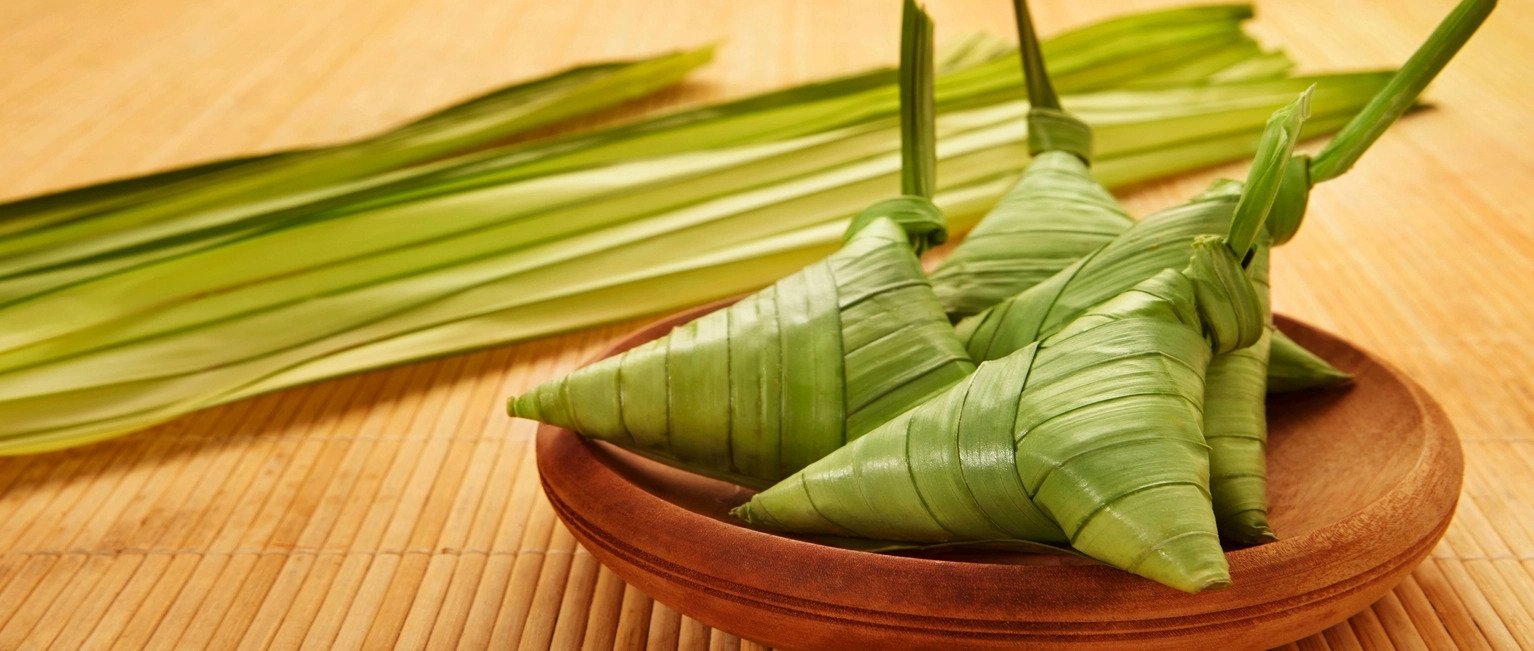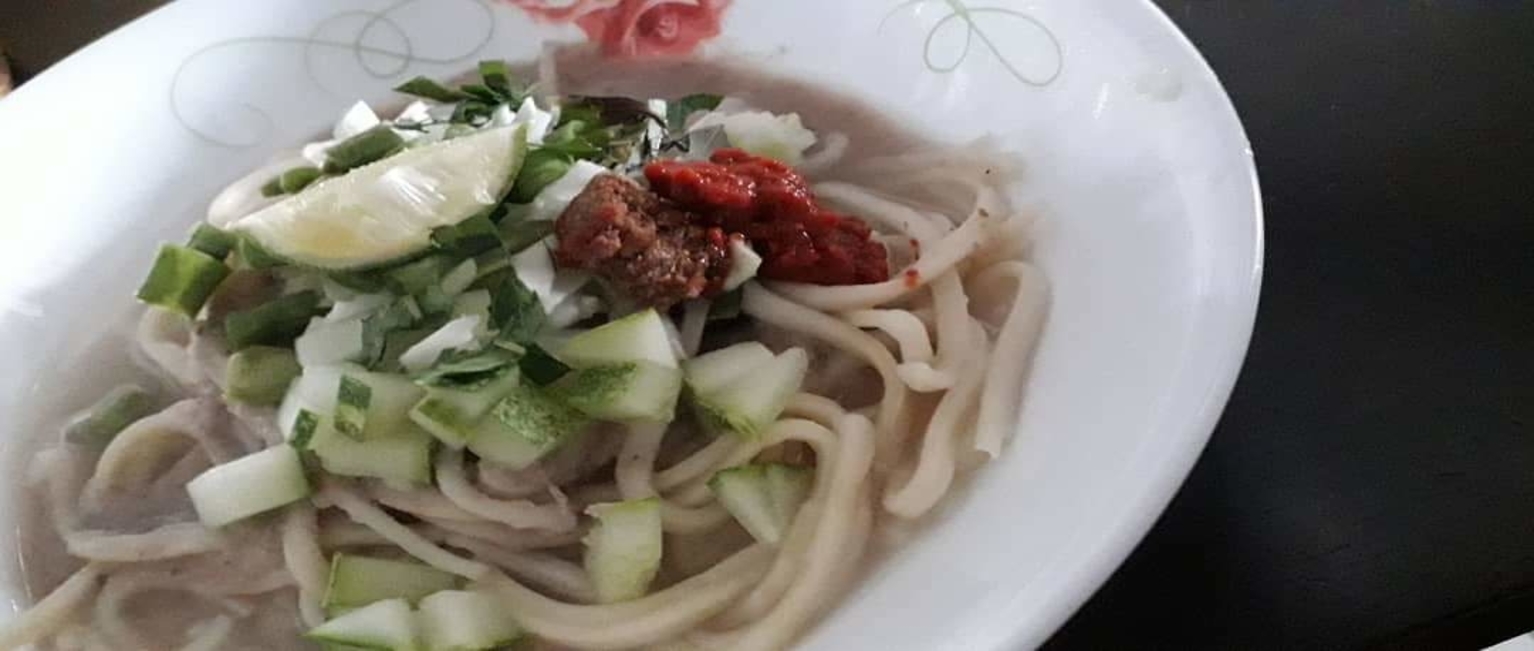Hari Raya Aidilfitri is a festive time marked by family, fun and, crucially for Malaysians, food! With an eclectic mix of heritages, our country is blessed with unique traditional dishes that make their eagerly awaited appearance every year.
Regional twists on classic dishes
In Terengganu, Hari Raya would not be complete without a serving of laksa kuah mentah. While the dish uses regular laksa noodles, its uniqueness comes from the sauce, which is made entirely without cooking. Prepared by using mildly steamed ikan selayang (round scad fish), garlic, onions, ground black pepper and coconut milk, the ingredients are blanched in hot water briefly before immediate serving. The dish is accompanied with a salad of cucumber and long beans alongside a selection of condiments that include chili paste, salt, belacan (shrimp paste) and lime.
For Muhammad Azham, the dish is a perennial favourite at his seaside village in Kuala Terengganu, especially on the second day of Aidilfitri, when people have had their fill of rendang and ketupat.
“I have never found this dish outside of Terengganu even though it is very easy to prepare,” the Legal Insolvency Officer says. “Most of all, it’s very tasty. Our guests will always go for second helpings!”
Over in Kedah, the festive staple ketupat comes with a difference. Ketupat palas pulut hitam is prepared by cooking black glutinous rice with coconut milk, salt and pandan leaves, before wrapping in daun palas (fan palm leaves) to cook further before being served. The combination of creamy and sweet tastes, fragrant aroma and soft, fluffy texture is enough to make any mouth water.
Residential Development Manager and Kedah native, Junita Abu Hasan explains the process: “Wrapping the ketupat is complicated. It is an acquired skill that can take a long time.
“This is why it is only on special occasions like Hari Raya. But it is well worth the effort because it is so versatile; it can be eaten on its own or with anything sweet or savoury throughout the day.”
Variations of ketupat daun palas are said to date to the early 1700s and was served in the royal courts of Kedah, Perlis and Southern Thailand to mark momentous occasions.
While Johor’s lontong has become a mainstream favourite across the country, kuah lodeh Muar has yet to break through beyond the state’s borders. This special take on the well-known gravy offers a healthy balance of vegetables, protein and high-quality fats in a rich burst of flavour.
Usually served for in the morning of Aidilfitri, this dish with Javanese origins contains jicama, carrots, tempe, tofu, long beans, hardboiled eggs, coconut milk and red chilis, and is cooked in a paste of onions, lemongrass, garlic, ginger, galangal, turmeric and dried shrimp for an extra kick.
“Kuah Lodeh Muar is a family tradition as our late grandma made it every Hari Raya. It is our comfort food and a symbol of togetherness,” says Datin Nurulhayati Anual.
The General Manager of Human Resources also adds that it easy to adapt for vegetarian relatives, making it the best choice to serve during the celebrations.
Unique Raya fare
It is said that Aidilfitri celebrations in Pahang cannot start without kuih qasidah, a bite-sized appetiser served for Hari Raya morning. It is made with wheat flour, coconut milk, eggs, sugar, pandan extract, a rare combination of spices and topped off with caramelised onions.
According to Kuantan-based Afizah Arifin, kuih qasidah is usually prepared by family elders, and requires a well-honed and precise technique to achieve the perfect balance between its differing flavours.
“I have tried learning from my mother-in-law but I haven’t been able to quite master the technique,” says the mother of five. “I hope to do so some day as it gets my children really excited about the start of Aidilfitri.”
Without fail, every home in Sarawak will serve kek lapis on Hari Raya. Its sweet flavour and vibrant colourful designs make it the perfect treat. While the cake may have Indonesian origins, Sarawakians have made it their own; fusing Western cake-making techniques with local tastes and penchant for experimentation. The result is a moist and melt-in-your-mouth cake that comes in almost any flavour and texture you can imagine. Today, the cake is a perfect symbol of East meets West and old meets new.
Hafizah Hassan, who hails from Kuching, explains that kek lapis Sarawak can be made of simple vertical layers or various patterns and motifs, but it must comprise of at least two colours and be baked in an oven.
“In my family, we use high quality butter to retain its great taste,” says the IT consultant currently based in KL. “My current favourite is the kek lapis belacan lumut cheese, which combines chocolate, Horlicks, kaya, pandan paste and cream cheese.”









